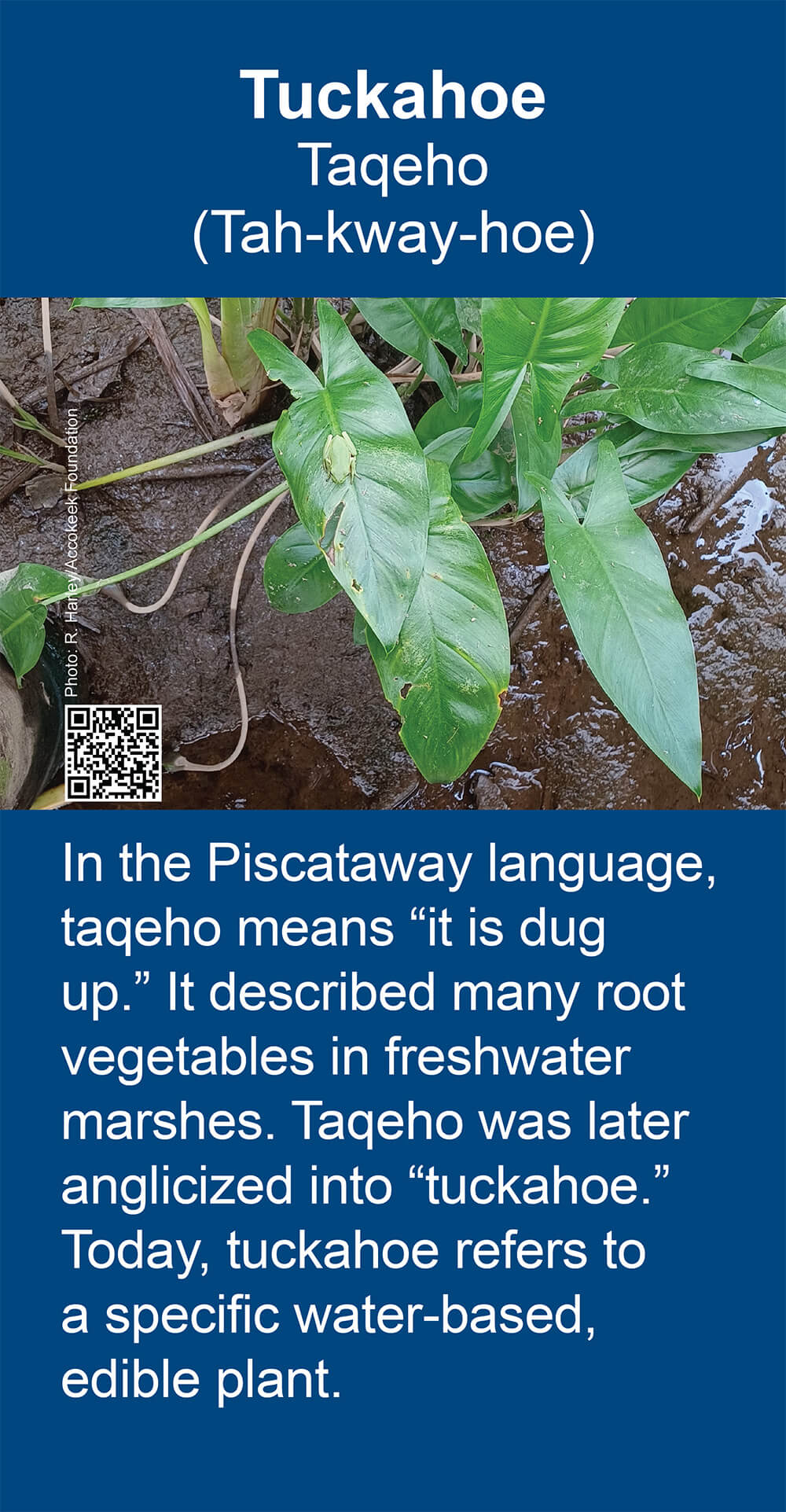Tuckahoe - Taqeho - (Tah-kway-hoe)
In the Piscataway language, taqeho means “it is dug up.” It described many root vegetables in freshwater marshes. Taqeho was later anglicized into “tuckahoe.” Today, tuckahoe refers to a specific water-based, edible plant. Photo: R. Harley/Accokeek Foundation

A Further Piscataway Perspective
In the Piscataway language Taqeho means “It is dug up”. It was a general description for many root-based vegetables found in our freshwater marshes. Our word was later adopted by the colonists and anglicized into “Tuckahoe”. Today the word Tuckahoe describes a specific water-based edible plant.
Tuckahoe grows in clumps where the water is too deep for cattails. Our ancestors would canoe out into the marsh and pull up the Tuckahoe stem to gain access to the roots, which could be under a foot of mud. Tuckahoe is most identifiable by its large green arrowhead shaped leaves and its yellow flowering stem. In the spring this plant provided small edible berries which were considered delicacies. These berries were sometimes cooked and eaten like peas with a flavor similar to chocolate.
The root of the Tuckahoe plant needed to be cooked for many hours before being eaten, to get rid of its natural toxins. Often the roots were placed in a pit with a large fire built on top to roast them for a day or more. The roasted roots were then dried out and pounded into a flour for making breads and soups. Tuckahoe is an excellent source of a starch, which is found in their potato-like roots.
Tuckahoe and Pickerel Weed at Mallows Bay Park
Anjela Barnes (Piscataway), Executive Director, Accokeek Foundation at Piscataway Park, shares the cultural significance of the tuckahoe and pickerel weed at Mallows Bay Park in Nanjemoy, Maryland. Credit: National Marine Sanctuary Foundation, Accokeek Foundation, NOAA.

